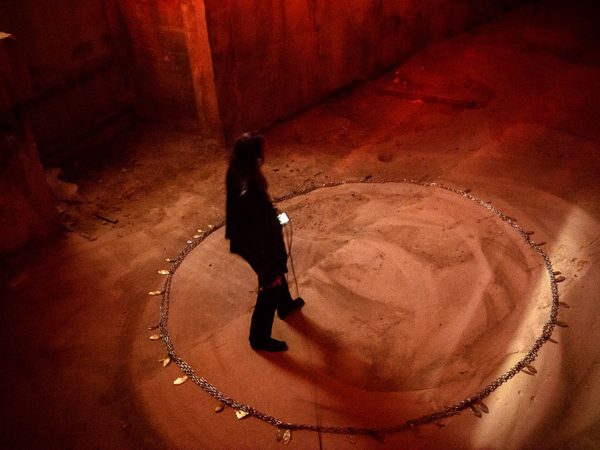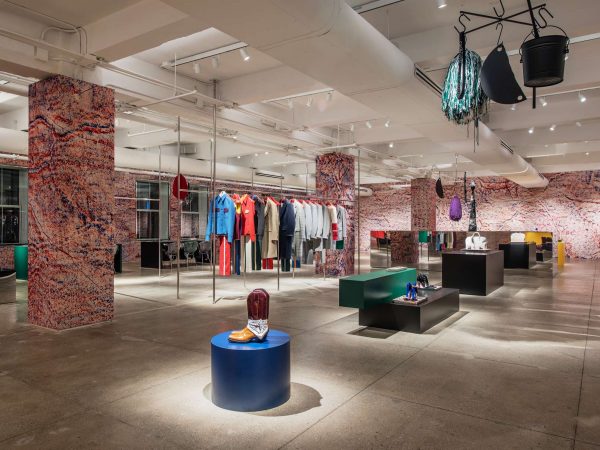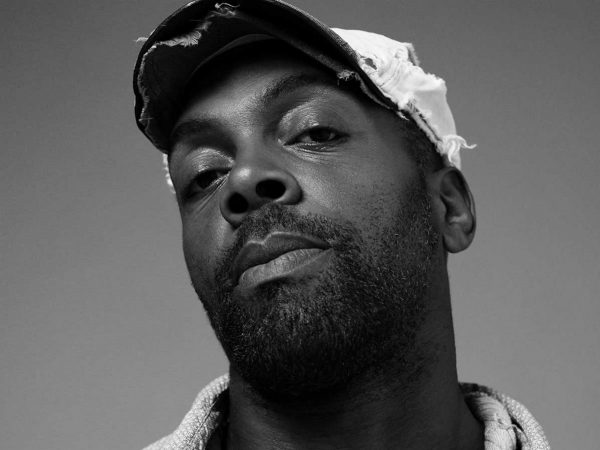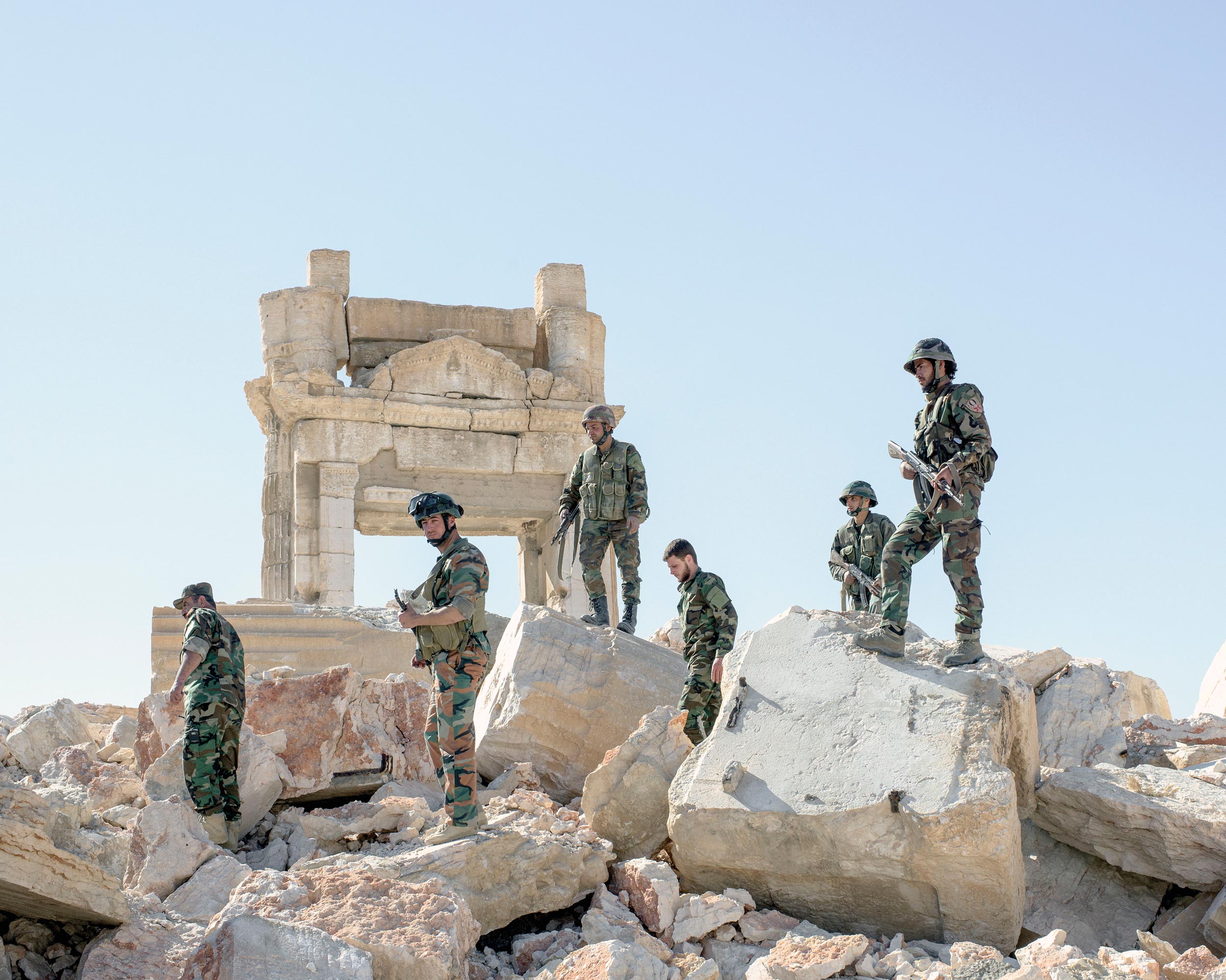As of February 2015, the self-proclaimed Islamic State in Iraq and Syria (ISIS) has deliberately destroyed over 100 museums, archaeological sites, and historic monuments, plus dozens more shrines and mosques of the Shia, Sufi, and Yazidi people. Cultural destruction has become a cornerstone of the group’s reign of terror, leaving many people asking what will be left of art—classical, Islamic, and contemporary—after the war.
ISIS did not invent cultural destruction, of course. Many of us can recall the dreadful sight of the Taliban blowing up the monumental, over 1,500-year-old Buddha statues in Afghanistan’s Bamiyan valley in March 2001. The deliberate and public destruction of art and cultural works was also a fixture of Nazi Germany, the Chinese Cultural Revolution, and the Khmer Rouge totalitarian dictatorship in Cambodia. Each of these episodes was devastating and hateful in particular ways that keyed into the prevailing political platform of violent repression. If there is a signature move within ISIS’s own program of cultural destruction, it is this totalizing erasure from artwork and image to idea and memory.
Above The Fold

Sam Contis Studies Male Seclusion

Slava Mogutin: “I Transgress, Therefore I Am”

The Present Past: Backstage New York Fashion Week Men’s Spring/Summer 2018

Pierre Bergé Has Died At 86

Falls the Shadow: Maria Grazia Chiuri Designs for Works & Process

An Olfactory Memory Inspires Jason Wu’s First Fragrance

Brave New Wonders: A Preview of the Inaugural Edition of “Close”

Georgia Hilmer’s Fashion Month, Part One

Modelogue: Georgia Hilmer’s Fashion Month, Part Two

Surf League by Thom Browne

Nick Hornby: Grand Narratives and Little Anecdotes

The New Helmut

Designer Turned Artist Jean-Charles de Castelbajac is the Pope of Pop

Splendid Reverie: Backstage Paris Haute Couture Fall/Winter 2017

Tom Burr Cultivates Space at Marcel Breuer’s Pirelli Tire Building

Ludovic de Saint Sernin Debuts Eponymous Collection in Paris

Peaceful Sedition: Backstage Paris Fashion Week Men’s Spring/Summer 2018

Ephemeral Relief: Backstage Milan Fashion Week Men’s Spring/Summer 2018

Olivier Saillard Challenges the Concept of a Museum

“Not Yours”: A New Film by Document and Diane Russo

Introducing: Kozaburo, 2017 LVMH Prize Finalist

Introducing: Marine Serre, 2017 LVMH Prize Finalist

Conscious Skin

Escapism Revived: Backstage London Fashion Week Men’s Spring/Summer 2018

Introducing: Cecilie Bahnsen, 2017 LVMH Prize Finalist

Introducing: Ambush, 2017 LVMH Prize Finalist

New Artifacts

Introducing: Nabil Nayal, 2017 LVMH Prize Finalist

Bringing the House Down

Introducing: Molly Goddard, 2017 LVMH Prize Finalist

Introducing: Atlein, 2017 LVMH Prize Finalist

Introducing: Jahnkoy, 2017 LVMH Prize Finalist

LVMH’s Final Eight

Escaping Reality: A Tour Through the 57th Venice Biennale with Patrik Ervell

Adorned and Subverted: Backstage MB Fashion Week Tbilisi Autumn/Winter 2017

The Geometry of Sound

Klaus Biesenbach Uncovers Papo Colo’s Artistic Legacy in Puerto Rico’s Rainforest

Westward Bound: Backstage Dior Resort 2018

Artist Francesco Vezzoli Uncovers the Radical Images of Lisetta Carmi with MoMA’s Roxana Marcoci

A Weekend in Berlin

Centered Rhyme by Elaine Lustig Cohen and Hermès

How to Proceed: “fashion after Fashion”

Robin Broadbent’s Inanimate Portraits

“Speak Easy”

Revelations of Truth

Re-Realizing the American Dream

Tomihiro Kono’s Hair Sculpting Process

The Art of Craft in the 21st Century

Strength and Rebellion: Backstage Seoul Fashion Week Autumn/Winter 2017

Decorative Growth

The Faces of London

Document Turns Five

Synthesized Chaos: “Scholomance” by Nico Vascellari

A Whole New World for Janette Beckman

New Ceremony: Backstage Paris Fashion Week Autumn/Winter 2017

New Perspectives on an American Classic

Realized Attraction: Backstage Milan Fashion Week Autumn/Winter 2017

Dematerialization: “Escape Attempts” at Shulamit Nazarian

“XOXO” by Jesse Mockrin

Brilliant Light: Backstage London Fashion Week Autumn/Winter 2017

The Form Challenged: Backstage New York Fashion Week Autumn/Winter 2017

Art for Tomorrow: Istanbul’74 Crafts Postcards for Project Lift

Inspiration & Progress

Paskal’s Theory of Design

On the Road

In Taiwan, American Designer Daniel DuGoff Finds Revelation

The Kit To Fixing Fashion

The Game Has Changed: Backstage New York Fashion Week Men’s Autumn/Winter 2017

Class is in Session: Andres Serrano at The School

Forma Originale: Burberry Previews February 2017

“Theoria”

Wearing Wanderlust: Waris Ahluwalia x The Kooples

Approaching Splendor: Backstage Paris Haute Couture Spring/Summer 2017

In Florence, History Returns Onstage

An Island Aesthetic: Loewe Travels to Ibiza

Wilfried Lantoine Takes His Collection to the Dancefloor

A Return To Form: Backstage New York Fashion Week Spring/Summer 2018

20 Years of Jeremy Scott

Offline in Cuba

Distortion of the Everyday at Faustine Steinmetz

Archetypes Redefined: Backstage London Fashion Week Spring/Summer 2018

Spring/Summer 2018 Through the Lens of Designer Erdem Moralıoğlu

A Week of Icons: Backstage Milan Fashion Week Spring/Summer 2018

Toasting the New Edition of Document

Embodying Rick Owens

Prada Channels the Wonder Women Illustrators of the 1940s

Andre Walker’s Collection 30 Years in the Making

Fallen From Grace, An Exclusive Look at Item Idem’s “NUII”

Breaking the System: Backstage Paris Fashion Week Men’s Autumn/Winter 2017

A Modern Manufactory at Mykita Studio

A Wanted Gleam: Backstage Milan Fashion Week Men’s Autumn/Winter 2017

Fashion’s Next, Cottweiler and Gabriela Hearst Take International Woolmark Prize

Beauty in Disorder: Backstage London Fashion Week Men’s Autumn/Winter 2017

“Dior by Mats Gustafson”

Prada’s Power

George Michael’s Epochal Supermodel Lip Sync

The Search for the Spirit of Miss General Idea

A Trace of the Real

Wear and Sniff

Underwater, Doug Aitken Returns to the Real
For ISIS, it is not enough to blow up statues or loot archaeological sites for profit. Concomitant with the physical destruction are acts that effect ontological destruction. By this I mean that the basic structures of meaning that imbue a statue or painting or shrine with symbolic valence are wiped out. Consider this: When ISIS overran the Syrian city of Tadmur in May 2015, it seized the majestic ruins of the ancient city of Palmyra, a UNESCO World Heritage Site that sits adjacent to Tadmur. Palmyra was once a leading city in the Eastern Roman Empire, and was known for its well-preserved buildings and artworks from that era. Ahead of the ISIS takeover, the former director of antiquities at Palmyra, Khalid al-Asaad, took measures to protect the valuable pieces in the local museum. When ISIS arrested and tortured him, al-Asaad refused to reveal the pieces’ whereabouts. On August 18, 2015, ISIS decapitated al-Asaad in Palmyra’s public square and humiliated his body with a placard accusing him of propagating idolatry and participating in “infidel” scholarly activity. Al-Asaad was in his early 80s. What he represented for ISIS was a specific form of knowledge about the past that had to be controlled and, if total control proved impossible, eliminated. Scholars have also been murdered in the Iraqi sector of the Islamic State, and ISIS shut down the renowned department of archaeology at Mosul University by October 2014.
Along with destroying knowledge about ancient history and its cultures, ISIS methodically dismantles ethnic minority communities within its midst. The Iraqi Yazidi population endured horrific persecution with the ISIS takeover of their home region in 2014. Mass executions, rape, and enslavement have gone hand-in-hand with the destruction of Yazidi homes, markets, and places of worship. This, too, is ontological violence: When there are no people left to speak of their culture and no culture left to speak of, the people and its culture become incomprehensible.
To fight back, archaeologists, human rights workers, and NGOs are documenting the destruction and planning for the recovery and repair of ancient artworks. In June of 2016 in Berlin, UNESCO and the German Federal Foreign Office convened a meeting of 230 Syrian and international experts to announce a cooperative damage assessment project in Syrian zones recaptured from ISIS by the Syrian government. The event signaled shared transnational concern for the future of the region’s cultural past. It also suggested the magnitude and complexity of the destruction. Because while the Syrian civil war and the rise of ISIS introduced new forms of cultural violence, archaeological looting and the deliberate destruction of ancient monuments were, in fact, endemic here for much of the 20th century.
Syria is roughly the size of Missouri in terms of its pre-war national territory, and it contains 4,500 registered archaeological sites (and perhaps many more that have not yet been recorded). Those sites contain artworks and artifacts from some 5,000 years of human inhabitation, including such important civilizations as the Sumerians, Akkadians, Assyrians, Hittites, Greeks, and Romans. This is the Fertile Crescent, the culturally rich zone that gave rise to some of Western civilization’s most notable milestones: the invention of written language, money, the domestication of crops, and the rise of complex urban societies. The clay tablets of the Sumerians, with the distinctive wedge-shaped strokes of cuneiform, give us some of the earliest examples of documented communication. Most archaeological sites in Syria have traces of more than one ethnic group, making them rich repositories of vibrant cultural diversity. It was this very symbolism that Saddam Hussein and Hafez al-Assad, former dictators of Iraq and Syria respectively, exploited in their political propaganda. Meanwhile, the artifact deposits that are so valuable for historians and archaeologists are equally valuable to participants in the antiquities trade, where ancient Near Eastern goods are in high demand.
It is this tragic love affair with ancient art that Ali Cherri responds to in his work. In “A Taxonomy of Fallacies: The Life of Dead Objects,” which just completed its show at the Sursock Museum in Beirut, the artist offers critical commentary on the dispersal of cultural heritage through the unregulated art market. The work comprised two installations: “Petrified,” a video exploring archaeological and museological spaces, and “Fragments,” in which Cherri uses a simple light box to display artifacts that he found through online dealers. The images presented here showcase the artist’s interest in the interplay among scientific archaeology, commodification, and histories of violence. The objects are a jumble of past places, peoples, materials, themes, genres, and authenticities, and because they are suspended over the stark white light with no labels they are without provenance. This aspect of the show is one of its especially striking achievements. Cherri’s intention, he writes, was to present the objects “once dead and buried, then undead and thus unburied, displayed under a clean light…[as] a spectacle of continuously-and-forever dead.”
As spectacle, it is hard to look and hard to look away. The clinical whiteness of the light box is unforgiving of flaws—the breakages, repairs, and losses that accrue through the centuries. This manner of illumination strips the objects of their shadows and metaphorically suggests that they have no instantiated histories. Having obliterated the past, the light box provides a superficial regrouping of the objects on the basis of their entwined commercial destinies. What links them now is the artist, Cherri, in the guise of the collector. It is his wunderkammer spilled from the cabinet and laid bare on the table.
When there are no people left to speak of their culture and no culture left to speak of, the people and its culture become incomprehensible.
Two objects stand out: the taxidermied bird and the wooden tau-tau from the Toraja people of the Celebes Islands. The bird is frozen in flight, perhaps spreading its wings protectively over the little pieces next to it (but perhaps, too, spooked by so many unquiet artifacts).
The tau-tau once held vigil at the tomb of a Toraja man, woman, or child, and now stares steadily at the viewer as if to say, “These things here, too, are dead.” The rest of the objects—the Cuchimilco figurine from northern Peru, the Hellenistic statue fragment, and the Egyptian statuette—share in the fate of decontextualization. Each of these pieces asks a series of questions: How did it arrive to its Western point of sale? What were the historical, political, and economic pathways that took it from its original context to points afar? And what do such pathways reveal about our own complicity in the objects’ cultural life (and subsequent death)?
These are challenging questions, and yet by asking them with artwork Cherri renews hope for the future of the past. The artist’s counterpoint to destruction is creation, and in contending with issues of looting and violence he enlists all of us in an ongoing narrative of historical and material change. There is a form of deliberate tenderness in each of his works, an acknowledgment of the devastating beauty of the ancient pieces and a reprieve, however brief, from the tumult of war and political change and a global appetite for artifacts.



























